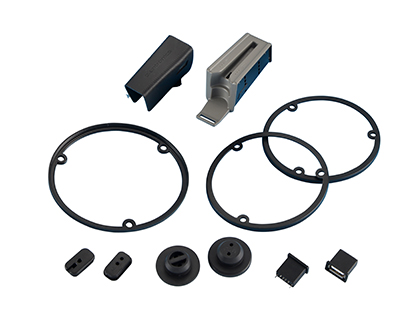
Liquid silica gel manufacturers will share with you the main types of common O-ring
The O-ring helps protect the sealing fluid against liquid and gas loss. The product can be available in many standard and metric sizes, which for many customers has a lot of choice, can choose the right one.
Custom O-ring
O-ring as a silicone rubber seal, can be customized to suit your design, when a custom designed O-ring is applied to design the appropriate application, it will seal a variety of high temperature (high temperature O-ring) low temperature conditions.
O-rings and seals are used for a variety of static and dynamic applications and complement gaskets and other sealing devices. Common O-rings are VITON fluororubber O-ring, rubber O-ring, silicone O-ring, fluorine O-ring, nitrile O-ring (NBR), ethylene propylene rubber O-ring, O-ring and O-ring butadiene, chlorine, fluorine O-ring, O-ring size suitable for most sealing applications is available.

The O-ring chemical compatibility chart compares elastomer compounds and highlights chemical resistance. This O-circle manual also lists the comparative properties of fluoro rubber, fluoro silicone rubber, silicone, map, butadiene, Butyl, chlorinated polyethylene, ethylene acrylic acid, ethylene polypropylene, fluorine, neoprene, isoprene, hydrogenated nitrile rubber, nitrile, polyacrylic acid, polyurethane, rubber and silicone rubber.
The design of sealing and O-ring seals or seals is an important consideration, and its elasticity is restored to its original thickness after being compressed. Key factors of compression include extrusion over time, and the amount of temperature changes in contact with the fluid.
The most important criteria in selecting o-rings include:
1, O and sealed fluid compatibility. Refers to the chemical compatibility diagram of o-rings.
2, O type silicone rubber sealing ring design to seal the seal, the working temperature (or temperature range) is very important. Liquid silicone products manufacturers tell you that operating at high temperatures may require an increase in the amount to compensate for thermal expansion or expansion or O-ring, O-ring. Conversely, when cryogenic sealing is required, a shallower gland depth may lead to an effective sealing with proper extrusion production.